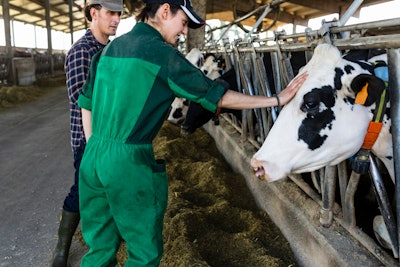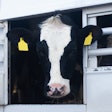
With the recent confirmation of highly pathogenic avian influenza (HPAI) in dairy cattle in Texas and Kansas, what do cattle producers need to know?
Feed Strategy asked University of Missouri associate extension professor Scott Poock, DVM, about the outbreak and what producers should be doing differently to protect their herds.
Feed Strategy: Do you know how the affected cattle contracted HPAI?
Scott Poock: The U.S. Department of Agriculture (USDA) believes it has been spread by migratory birds. I have not read anything from the USDA that has specifically identified the transmission. However, typically when the birds have been a source of a disease (Salmonella, for example), it is contamination of the feed from feces.
FS: What symptoms are the cattle are exhibiting? Do they seem to be recovering on their own?
Poock: The symptoms include a decrease in feed intake, decreased rumen function, subsequent loss of milk production, the milk may become more like colostrum rather than milk, and some have reported secondary pneumonias. The cattle need supportive therapy which may include anti-inflammatories, fluids, probiotics and antibiotics if secondary infections occur. Some cows have been treated for 2-3 weeks before recovery.
FS: Why has HPAI so far only affected dairy herds and not beef cattle? Are beef cattle also at risk?
Poock: You are correct that, as of today, there are no known cases in beef cattle. The USDA has been emphasizing that this is most likely a multifactorial problem. Thus, whatever might be the other factors, HPAI along with them has led to the outbreak.
FS: Are there other production animals, such as pigs, that are also at risk of contracting HPAI?
Poock: There have been some goats in Minnesota on a farm that had HPAI in their poultry show up positive for the virus. USDA has reported that up to 200 mammals have had the virus isolated from them.
FS: Can the virus transfer from mammals back to birds?
Poock: Very good question, but I don’t believe we know the answer to this question yet.
FS: What should producers know about HPAI and how to keep their herds healthy?
Poock: Have a solid biosecurity protocol in place. This should include decreasing the effects of wild birds on a farm.
FS: Is there anything new or different producers should be doing now that HPAI has been confirmed in cattle?
Poock: At this point, the best thing is to increase biosecurity measures.
FS: How can consumers be assured the dairy products on store shelves are safe?
Poock: Pasteurization kills the HPAI virus. USDA has stated that pasteurized milk and properly cooked meat are safe for human consumption.
FS: Why has it taken this long for HPAI to hit all these mammals (goats, bears, seals, cows, etc.) or why now?
Poock: Not sure it has taken this long, but that we now are looking for the virus. We don’t know, but it could have been circulating among mammals, and these dairy cattle (are) the perfect storm with other potential factors. This is speculation at this time.














